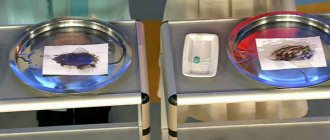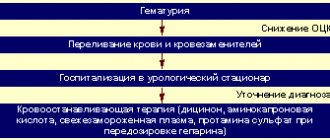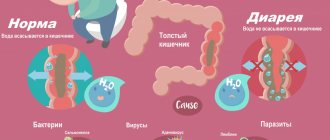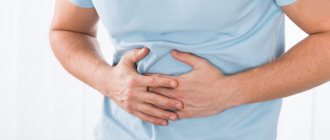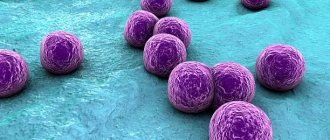Number of bowel movements
For an adult, normal stool is considered without prolonged strong straining once every 1-2 days or 2 times a day. After the process of defecation, there is a feeling of comfort and complete emptying of the intestines, and the urge completely disappears. Some external circumstances - bed rest, a change in familiar surroundings, the need to use a vessel, being in the company of strangers - can slow down or increase the frequency of this process.
A deviation from the norm is the absence of bowel movements for 3 days (constipation) or very frequent bowel movements - up to 5 times a day or more (diarrhea).
Up to contents
Impurities in stool
Norm
A few white lumps in the stool of a breastfed baby are not a pathology. In children receiving dense foods, there are undigested pieces of vegetables and fruits, the skin is also normal.
- White lumps in the stool. Of course, even a breastfed baby's stool is not uniform. Most often, mothers are worried about white lumps - these are traces of breast milk; their presence in small quantities is considered normal. If your child's weight is constantly growing, there is no reason to worry. Many white lumps in an infant's stool are a reason for a nursing mother to think about a proper diet with fewer fatty foods in the diet. Such lumps also occur in bottle-fed children - these are the remains of undigested milk formula. With age, as the digestive systems and functions develop, such lumps in the stool are no longer observed.
- Small pieces and fibers in the stool. With age, we accustom the child to denser foods - pieces of boiled, and then fresh vegetables and fruits. But your baby will not be able to learn to chew correctly and thoroughly (mechanically process food) right away. And even the intestinal microbiota cannot “finish” large pieces of vegetables and fruits (dietary fiber) - the bacteria of the digestive tract normally process dietary fiber; our body does not have enzymes to digest it.
Daily amount of feces
With a mixed diet, the daily amount of feces can vary widely. The average is about 150-400 g. Note that when consuming predominantly plant foods, the amount of feces may increase, while animal feces may decrease.
A significant increase or decrease in fecal mass is a kind of alarm signal. The main causes of polyfecality (increased amount of feces) include:
- eating a lot of fiber;
- stomach diseases accompanied by impaired protein digestion;
- intestinal diseases accompanied by impaired absorption of food, water and increased peristalsis, as well as secretion of inflammatory exudate and mucus into the intestinal lumen (enteritis, polyps);
- disease of the liver, gastric bladder and biliary tract, leading to impaired bile secretion and absorption in the colon;
- disease of the pancreas with insufficiency of its exocrine function (insufficient digestion of proteins and fats);
- eating a lot of fiber.
The main reasons for a decrease in the amount of feces include:
- the predominance of easily digestible foods in the diet;
- reducing the amount of food eaten;
- the presence of constipation, in which, due to prolonged retention of feces in the large intestine and maximum absorption of water, the volume of feces decreases.
Up to contents
Diseases for which a doctor may prescribe a general stool test (coprogram)
Anal fissure
With an anal fissure, feces may take the form of small lumps (“sheep feces” indicates a spastic condition of the intestines). Due to bleeding, scarlet blood and slightly changed red blood cells may be present in the stool.
Crohn's disease
With Crohn's disease, you may find blood in your stool. The Vishnyakov-Triboulet reaction reveals soluble protein in it. Crohn's disease affecting the colon is characterized by the presence in the feces of a large number of red blood cells in combination with leukocytes and columnar epithelium.
Colon diverticulosis
With diverticular disease, due to the long stay of stool in the colon, it takes the form of “large lumps”.
Duodenal ulcer
With a duodenal ulcer, the feces have the form of small lumps (“sheep feces” indicates a spastic condition of the intestines).
Stomach ulcer
With a stomach ulcer, the feces have the form of small lumps (“sheep feces” indicates a spastic condition of the intestines).
Chronic pancreatitis
In chronic pancreatitis with exocrine insufficiency, stool may have a pasty consistency.
Hemolytic anemia
With hemolytic jaundice (anemia), due to massive hemolysis of red blood cells, the amount of stercobilin in the feces increases.
Benign neoplasms of the colon
With a tumor accompanied by bleeding from the distal colon, the stool may have a pronounced red color. With disintegrating colon tumors, blood may be found in the stool. Pus on the surface of the stool occurs when there is severe inflammation and ulceration of the colon mucosa (disintegration of an intestinal tumor), often along with blood and mucus. When a colon tumor is in the stage of decay due to bleeding, the reaction to blood (Gregersen reaction) is positive.
Intestinal helminthiases
With helminthic infestation, the feces contain eggs of roundworms, tapeworms, etc.
Cirrhosis of the liver
In liver failure, including liver cirrhosis, the stool is grayish-white, clayey (acholic).
Ulcerative colitis
With colitis, there is mucus covering the outside of the stool in the form of thin lumps. With ulcerative colitis, blood may be found in the stool; pus on the surface of the stool, often along with blood and mucus; soluble protein in the Vishnyakov-Triboulet reaction; a large number of leukocytes (usually neutrophils); a large number of red blood cells in combination with leukocytes and columnar epithelium.
Constipation
With prolonged constipation caused by chronic colitis, peptic ulcers and other conditions associated with increased absorption of fluid in the intestine, the amount of feces decreases. With constant constipation due to excessive absorption of water, the consistency of stool is dense. With constipation, there may be mucus covering the outside of the stool in the form of thin lumps.
Malignant neoplasm of the colon
The form of feces in the form of “large lumps” - when feces remain in the colon for a long time - is noted in colon cancer. Pronounced red color of stool - with a tumor accompanied by bleeding from the distal parts of the colon and rectum. Blood in the stool can be found in disintegrating colon tumors. Pus on the surface of the stool occurs when there is severe inflammation and ulceration of the colon mucosa (disintegration of an intestinal tumor), often along with blood and mucus. A positive reaction to blood (Gregersen reaction) indicates bleeding with a tumor of the colon in the stage of decay. A large number of red blood cells in combination with leukocytes and columnar epithelium is characteristic of malignant neoplasms of the colon.
Irritable bowel syndrome, chronic colitis
With colitis with diarrhea, the amount of feces increases. The amount of feces decreases with prolonged constipation caused by chronic colitis. Mucus covering the outside of formed feces in the form of thin lumps is found in colitis. An alkaline reaction (pH 8.0-10.0) occurs in colitis with constipation. A large number of leukocytes (usually neutrophils) are observed in colitis of various etiologies.
Cholera
In cholera, stool looks like a gray inflammatory exudate with fibrin flakes and pieces of the colon mucosa (“rice water”).
Amoebiasis
With amebiasis, the stool is jelly-like, deep pink or red.
Typhoid fever
In typhoid fever, the stool looks like “pea soup.”
Stool color
With a mixed diet, the stool is brown.
A dark brown tint of stool may indicate the presence of disturbances in the digestion of food in the stomach, colitis, putrefactive dyspepsia. This color also predominates with constipation and following a meat diet.
Light brown is observed with increased intestinal motility and following a dairy-vegetable diet.
Orange is observed when consuming beta-carotene and foods high in it (for example, pumpkin, carrots, etc.).
A reddish color occurs when bleeding from the lower intestines (with anal fissures, hemorrhoids, ulcerative colitis, etc.), as well as when eating beets.
The green color is observed when eating a large amount of sorrel, spinach, lettuce, with increased intestinal motility or the presence of dysbacteriosis.
Light yellow stool indicates very rapid passage of feces through the intestines.
Black color - with bleeding from the upper gastrointestinal tract (cirrhosis, peptic ulcer, colon cancer), ingestion of blood during pulmonary or nasal bleeding, when taking activated charcoal and bismuth preparations, eating blueberries, currants.
Greenish-black stool may occur when taking iron supplements.
Grayish-white stool indicates that very little or no bile enters the intestines (acute pancreatitis, blockage of the bile duct, cirrhosis of the liver, hepatitis, etc.).
Up to contents
Chemical research
Fecal reaction
An acidic reaction (pH 5.0-6.5) is observed when iodophilic flora is activated, producing carbon dioxide and organic acids (fermentative dyspepsia). An alkaline reaction (pH 8.0-10.0) occurs with insufficient digestion of food, with colitis with constipation, sharply alkaline with putrefactive and fermentative dyspepsia.
Reaction to blood (Gregersen reaction)
A positive reaction to blood indicates bleeding in any part of the gastrointestinal tract (bleeding from the gums, rupture of varicose veins of the esophagus, erosive and ulcerative lesions of the gastrointestinal tract, tumors of any part of the gastrointestinal tract in the stage of decay).
Reaction to stercobilin
The absence or sharp decrease in the amount of stercobilin in the feces (the reaction to stercobilin is negative) indicates obstruction of the common bile duct with a stone, compression by a tumor, stricture, stenosis of the common bile duct, or a sharp decrease in liver function (for example, in acute viral hepatitis). An increase in the amount of stercobilin in feces occurs with massive hemolysis of red blood cells (hemolytic jaundice) or increased bile secretion.
Reaction to bilirubin
The detection of unchanged bilirubin in the stool of an adult indicates a disruption in the process of bilirubin recovery in the intestine under the influence of microbial flora. Bilirubin can appear during rapid evacuation of food (sharp increase in intestinal motility), severe dysbiosis (syndrome of bacterial overgrowth in the colon) after taking antibacterial drugs.
Vishnyakov-Triboulet reaction (for soluble protein)
The Vishnyakov-Triboulet reaction is used to identify a hidden inflammatory process. The detection of soluble protein in stool indicates inflammation of the intestinal mucosa (ulcerative colitis, Crohn's disease).
Consistency (density) of stool
Normally, the stool is soft and formed. Feces should consist of 70% water, 30% from the remains of processed food, exfoliated intestinal cells and dead bacteria.
The presence of pathology is indicated by liquid, foamy, ointment-like, mushy, semi-liquid, excessively dense or putty-like stool.
- Pasty stools – with increased peristalsis, inflammation or increased secretion in the intestines, may be associated with the consumption of large amounts of plant foods.
- Very dense “sheep” feces - observed with constipation and dehydration, may be a sign of a mechanical obstruction in the rectum.
- Ointment-like - observed in diseases of the pancreas, a sharp decrease in the flow of bile into the intestines, and may be associated with increased consumption of fatty foods the day before. The frequent appearance of ointment-like stool may be a symptom of pancreatic diseases and insufficient bile secretion.
- Liquid - observed when the passage of feces is accelerated, the absorption or digestion of food in the small intestine is impaired, it is a symptom of toxic infection, acute intestinal infection, poisoning.
- Foamy - observed when fermentation processes in the intestines prevail over the rest.
Up to contents
What may affect the results
- Failure to follow nutritional recommendations, use of an enema, or performing a fluoroscopic or endoscopic examination shortly before the test.
- Violation of the rules for collecting stool, including the use of a non-sterile container for collecting biomaterial or collection directly from the toilet, as a result of which foreign microorganisms from urine, genital secretions, water from the toilet, etc. entered it.
- Failure to comply with the conditions for storing and transporting feces (biomaterial was delivered to the laboratory after the maximum established time from the moment of collection).
If the result of the coprogram seems incorrect to you, it is better to take the test again, adhering to all the recommendations for preparation and collection rules.
Stool smell
The smell of the stool should be fecal, unpleasant, but not pungent. Depends on the severity of fermentation and decay processes, as well as the composition of food.
When the digestive process is disrupted, undigested food begins to rot in the intestines or becomes food for pathogenic bacteria. Some of them produce hydrogen sulfide, which has a characteristic rotten odor.
Sour – for fermentative dyspepsia, which occurs due to excessive consumption of carbohydrates (flour products, sugar, peas, fruits, etc.) and fermented drinks (for example, kvass).
Fetid - indicates dysfunction of the pancreas, hypersecretion of the large intestine, and a decrease in the flow of bile into the intestines. The cause of too foul-smelling stool may be the proliferation of pathogenic bacteria.
Putrefactive – noted for constipation, colitis, disruption of the digestive process in the stomach, putrefactive dyspepsia.
Faint odor - with accelerated evacuation from the small intestine or constipation.
The smell of rancid oil is due to bacterial decomposition of fats in the intestines.
Up to contents
Microscopic examination
Muscle fibers - with striations (unchanged, undigested) and without striations (changed, digested). A large number of changed and unchanged muscle fibers in the feces (creatorrhoea) indicates a violation of proteolysis (protein digestion):
- in conditions accompanied by achlorhydria (lack of free HCl in gastric juice) and achylia (complete absence of secretion of HCl, pepsin and other components of gastric juice): atrophic pangastritis, a condition after gastric resection;
- with accelerated evacuation of food chyme from the intestines;
- in case of violation of the exocrine function of the pancreas;
- with putrefactive dyspepsia.
Connective tissue (remnants of undigested vessels, ligaments, fascia, cartilage). The presence of connective tissue in the feces indicates a deficiency of proteolytic enzymes of the stomach and is observed with hypo- and achlorhydria, achylia.
Fat is neutral. Fatty acid. Salts of fatty acids (soaps)
The appearance of large amounts of neutral fat, fatty acids and soaps in the stool is called steatorrhea. This happens:
- with exocrine pancreatic insufficiency, a mechanical obstruction to the outflow of pancreatic juice, when steatorrhea is represented by neutral fat;
- if the flow of bile into the duodenum is impaired and if the absorption of fatty acids in the small intestine is impaired, fatty acids or salts of fatty acids (soaps) are found in the feces.
Plant fiber
Digestible - found in the pulp of vegetables, fruits, legumes and grains. Indigestible fiber (the skin of fruits and vegetables, plant hairs, the epidermis of cereals) has no diagnostic value, since there are no enzymes in the human digestive system that break it down. It is found in large quantities during rapid evacuation of food from the stomach, achlorhydria, achylia, and the syndrome of bacterial overgrowth in the colon.
Starch
The presence of a large amount of starch in the feces is called amilorrhea and is observed more often with increased intestinal motility, fermentative dyspepsia, and less often with exocrine insufficiency of pancreatic digestion.
Iodophilic microflora (clostridia)
With a large amount of carbohydrates, clostridia multiply intensively. A large number of clostridia is regarded as fermentative dysbiosis.
Epithelium
A large amount of columnar epithelium in the feces is observed in acute and chronic colitis of various etiologies.
Leukocytes
A large number of leukocytes (usually neutrophils) are observed in acute and chronic enteritis and colitis of various etiologies, ulcerative necrotic lesions of the intestinal mucosa, intestinal tuberculosis, and dysentery.
Red blood cells
The appearance of slightly changed red blood cells in the stool indicates the presence of bleeding from the colon, mainly from its distal parts (ulceration of the mucous membrane, disintegrating tumor of the rectum and sigmoid colon, anal fissures, hemorrhoids). A large number of red blood cells in combination with leukocytes and columnar epithelium is characteristic of ulcerative colitis, Crohn's disease with damage to the colon, polyposis and malignant neoplasms of the colon.
Worm eggs
Eggs of roundworms, tapeworms, etc. indicate a corresponding helminthic infestation.
Pathogenic protozoa
Cysts of dysenteric amoeba, Giardia, etc. indicate a corresponding invasion by protozoa.
Yeast cells
Found in feces during treatment with antibiotics and corticosteroids. Identification of the fungus Candida albicans is carried out by culturing on special media (Sabouraud's medium, Microstix Candida) and indicates a fungal infection of the intestine.
Calcium oxalate (oxalic lime crystals)
Detection of crystals is a sign of achlorhydria.
Triple phosphate crystals (ammonium phosphate-magnesia)
Triple phosphate crystals found in feces (pH 8.5-10.0) immediately after defecation indicate increased protein putrefaction in the colon.
Bowel gases
Gases are a natural byproduct of food digestion and fermentation as it moves through the gastrointestinal tract. An adult excretes about 0.2-0.5 liters of gas per day.
Gas formation occurs during the digestion process in the stomach due to the activity of microorganisms that inhabit the intestines. They decompose nutrients, releasing hydrogen sulfide, methane, carbon dioxide and hydrogen.
A normal increase in the amount of gases is considered:
- when consumed in large quantities of carbohydrates and fiber;
- swallowing large amounts of air while drinking and eating;
- consuming foods that stimulate fermentation processes, as well as dairy products for lactose intolerance.
An increase in the amount of gases can be observed with the following pathologies.
- Intestinal dysbiosis.
- Celiac disease.
- Irritable bowel syndrome.
- Malabsorption.
- Enzyme deficiency of the pancreas.
- Chronic liver diseases: hepatitis, cholecystitis, cirrhosis.
- Chronic intestinal diseases (enteritis, colitis).
- Peptic ulcer of the stomach and duodenum, gastritis.
Up to contents
Normal values
| Index | Meaning |
| Macroscopic examination | |
| Consistency | Dense |
| Form | Decorated |
| Color | Brown |
| Smell | fecal, unsharp |
| pH | 6 – 8 |
| Slime | Absent |
| Blood | Absent |
| Leftover undigested food | None |
| Chemical research | |
| Reaction to occult blood | Negative |
| Reaction to protein | Negative |
| Reaction to stercobilin | Positive |
| Reaction to bilirubin | Negative |
| Microscopic examination | |
| Muscle fibers with striations | None |
| Muscle fibers without striations | units in the preparation |
| Connective tissue | Absent |
| Fat neutral | Absent |
| Fatty acid | Absent |
| Fatty acid salts | insignificant amount |
| Digested plant fiber | units in the preparation |
| Undigested plant fiber | units in the preparation |
| Intracellular starch | Absent |
| Extracellular starch | Absent |
| Iodophilic flora is normal | units in the preparation |
| Pathological iodophilic flora | Absent |
| Crystals | None |
| Slime | Absent |
| Columnar epithelium | Absent |
| Epithelium is flat | Absent |
| Leukocytes | None |
| Red blood cells | None |
| Protozoa | None |
| Worm eggs | None |
| Yeast mushrooms | None |
Mucus in the stool of an infant
The cause of mucus in the stool of infants may be ARVI.
In the first month of life, the newborn’s intestines are populated by microflora, and the child’s gastrointestinal tract adapts to the changed operating conditions. During this transitional period, stool can have a very different appearance, have a different color, consistency, and frequency. Foam and mucus appear in it.
These phenomena in the feces of a newborn are caused by the establishment of a balance between beneficial lacto- and bifidobacteria and pathogenic flora, which is always present in varying quantities in the intestines of any person.
Mucus in an infant's stool during this period is normal, and there is no need to worry about it. It’s another matter when this symptom appears in a child several months after birth. Causes of mucus in stool in infants:

